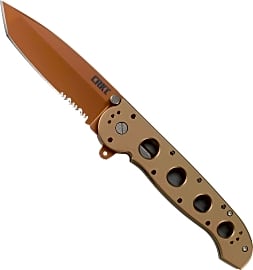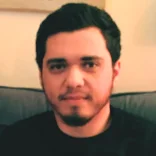The 10 Best Folding Knives

This wiki has been updated 32 times since it was first published in February of 2018. Regardless of whether you are a dedicated survivalist or just someone who spends a lot of time in the great outdoors, one of these folding knives can be a handy addition to your gear. Great for camping and fishing, they are easy to carry and come with razor sharp blades that are equally as useful for opening those dreadful blister packs. Note that their use is restricted in some areas. When users buy our independently chosen editorial picks, we may earn commissions to help fund the Wiki.
Editor's Notes
July 23, 2020:
Removed the Zero Tolerance Tiger Stripe, the Ontario Joe Pardue Utiliac 8904, and the Spyderco Delica4 in favor of the Benchmade 940, the Spyderco Military Model, and the Cold Steel Crawford Model 1.
We've demoted the Buck Knives 110 because even though its an excellent folding knife, there are some issues that may prevent it from being an every day carry for many people. Also, there are better folding knives out there. I love the 110 that I got as a gift many years ago and it has gotten plenty of use. However, it usually requires two hands to open since its difficult for me to get my nail into the notch (I cut my nails very short) and so I can't flip it open with one hand. If you're wearing gloves, you definitely need two hands. For some, it may also be too heavy to carry every day. I don't mind this at all, I like a heavy knife, but some prefer their knife to feel light in their pocket.
The Benchmade 940 is the go-to knife for many people because it is incredibly tough thanks to its thick blade profile. It has aluminum scales, which I think feels a lot better in the hand than any plastic and its axis lock is a joy to use. There isn't really anything negative I can say about the 940. It's a dependable knife that takes a great edge.
Folding knives may be regulated in your area so check to make sure that you're in compliance. Some states have blade length limits and/or spring-assisted opening.
April 29, 2019:
For its classic style, excellent usability, and admirable longevity, we still find the Buck Knives 110 Hunter to be a top choice when it comes to folding knives. It's warrantied for life, and considering the quality, it is not unreasonably expensive. The CRKT M-16 remains a fine alternative for those who'd like something a little more feature-heavy; it's got a seatbelt cutter and window breaker, making it a great choice for EDC or perhaps a bug-out bag. For those who're looking for something less costly, we added the ever-popular Ontario Rat II, which is budget-friendly but feels like a much pricier model. The four-way pocket clip is a nice touch, as well, that lets you configure it for tip up or tip down carry. The CRKT Squid is another one to consider, although it doesn't open as quickly as some, which may be a dealbreaker depending on how you use your knife on a day-to-day basis. And, on the other side of the price spectrum, we added the Benchmade Mini Griptilian. It comes in serrated or plain edge, with a satin or coated finish, and in a variety of colors, so you can find just the configuration for you. Finally, we removed both the BladeMate Tactical and the Woobud Pocket, which are not always readily available.
A Brief History Of Pocketknives
This knife, known as the Barlow, was made with a wooden handle to cut costs, with basic blade shapes that were easy to both craft and maintain.
The earliest known version of the pocketknife dates all the way back to the Iron Age, and it was made of a single blade with a bone handle. Surprisingly enough, this early jackknife could be folded, as it had a very simple hinge in the middle. It couldn't lock, nor did it spring open, but it could at least be somewhat safely hidden in clothes until it was needed.
During the height of their empire, the Romans would recruit Iberian mercenaries to fight for them, and they equipped them with folding knives. A few Swiss Army-style knives — complete with spoon, fork, and spatula — have even popped up from around 200 C.E.
Other cultures had their own versions of pocketknives, as well. The Vikings were known to carry models made with bone handles and iron blades, and this basic construction — known as the "peasant knife" — was common in agrarian cultures, as it was useful for everyday purposes as well as combat.
In the early 1800s, King Ferdinand VII of Spain outlawed the use of guns and long swords in the hopes that his police and military would be the only ones armed. However, the ever-cunning criminal elements of the time resorted to making knives with pistol grips and springs that kept the blade extended, allowing them to continue their criminal ways.
The first mass-produced model came out of Sheffield, England, around that same time. This knife, known as the Barlow, was made with a wooden handle to cut costs, with basic blade shapes that were easy to both craft and maintain. The design was so successful that versions of the Barlow are still being made today.
In 1891, the first Swiss Army knife was created, although it wouldn't be given that moniker for another few decades. This version, the Modell 1890, was standard-issue for Swiss soldiers, and only had a handful of tools rather than the wide assortment that its modern counterparts contain.
Almost a full century later, in 1981, Spyderco introduced a knife with a round thumb hole in the blade for easy opening. This led to a renaissance in tactical pocketknives, and they became immensely popular among outdoorsmen, security personnel, and hunters.
You have a vast array of options to choose from when shopping today, with everything from standard slip joints to spring-loaded tactical versions available.
Not all are legal in every jurisdiction, so check that yours passes muster before slipping it in your pocket every morning. Regardless, it's probably a good idea to leave it at home if you're going to school or a courthouse, and above all, never take it to a gunfight.
Choosing The Right Folding Knife For You
With so many options out there, it can be difficult to decide what type of folding knife is best for you.
Most are designed for a specific purpose, or rather a specific lifestyle. The needs of a hunter will differ from those of a farmer, and while there may be some overlap there, it's best to find one that's designed for the tasks you have in mind.
You can find some relatively long blades on folding knives, but that usually makes them too cumbersome for everyday carry.
Virtually everything will be predicated on this. Yes, there are a variety of features available — such as serrated edges, seat belt cutters, lanyard attachments, and more — but they may not be useful for your intended purpose. For example, some people like thumb studs that make it easy to open, while others find that they tend to snag on pockets, impairing their ability to get the knife out quickly.
There are other factors to think about, of course. Blade quality is a big one; high-quality steel lasts longer and performs better, but it's also more expensive.
The length is also important. Some folding knives have really small blades, which makes them easier to carry in your pocket but limits their ability to tackle tougher jobs. You can find some relatively long blades on folding knives, but that usually makes them too cumbersome for everyday carry.
Don't overlook the opening mechanism, either. Many are manually-opened, usually with a thumb hole or fingernail notch. These are less likely to come open accidentally, but they can be difficult to open in a hurry. Others have assisted-opening mechanisms that unfurl the blade with just a little bit of thumb pressure. These usually have some sort of safety mechanism to prevent them from opening accidentally, but it's up to you how much you trust them.
Proper Care And Maintenance Of Your Folding Knife
Folding knives are like most other pieces of equipment, in that they're capable of offering you many years of faithful service if you take care of them.
It's important to try to keep the blade dry as much as possible, as rust and corrosion can quickly render a previously good knife worthless. Keep it in a spot where it's not likely to get wet, and if it does, dry it off as soon as possible.
Use the oil to lubricate any moving parts while you're at it.
When it's time to clean it — and this is something that should be done regularly — use regular soap and water (this is the only exception to the "keep it dry" rule mentioned above). You can use an old toothbrush to gently dislodge any gunk, and you may need to disassemble it.
Once you're done washing it, dry it with a cloth or a hair dryer and set it out in the open air for at least 15 minutes. When you're sure it's completely dry, oil the blade. You can find specially-made oils for this, or just use WD-40. Use the oil to lubricate any moving parts while you're at it.
Finally, drag the edge of the blade along a whetstone a few times to sharpen it. When you think it's close to being sharp enough, grab a tomato and see if you can cut through it without sliding off.
Or you could dry shave with it, but all that blood would go against the "keep it dry" rule.















